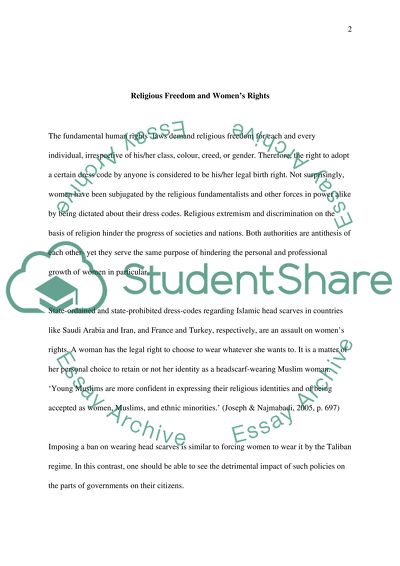Cite this document
(“Religious Freedom and Women's Rights Essay Example | Topics and Well Written Essays - 2750 words”, n.d.)
Retrieved from https://studentshare.org/sociology/1413657-religious-freedom-and-womens-rights
Retrieved from https://studentshare.org/sociology/1413657-religious-freedom-and-womens-rights
(Religious Freedom and Women'S Rights Essay Example | Topics and Well Written Essays - 2750 Words)
https://studentshare.org/sociology/1413657-religious-freedom-and-womens-rights.
https://studentshare.org/sociology/1413657-religious-freedom-and-womens-rights.
“Religious Freedom and Women'S Rights Essay Example | Topics and Well Written Essays - 2750 Words”, n.d. https://studentshare.org/sociology/1413657-religious-freedom-and-womens-rights.


